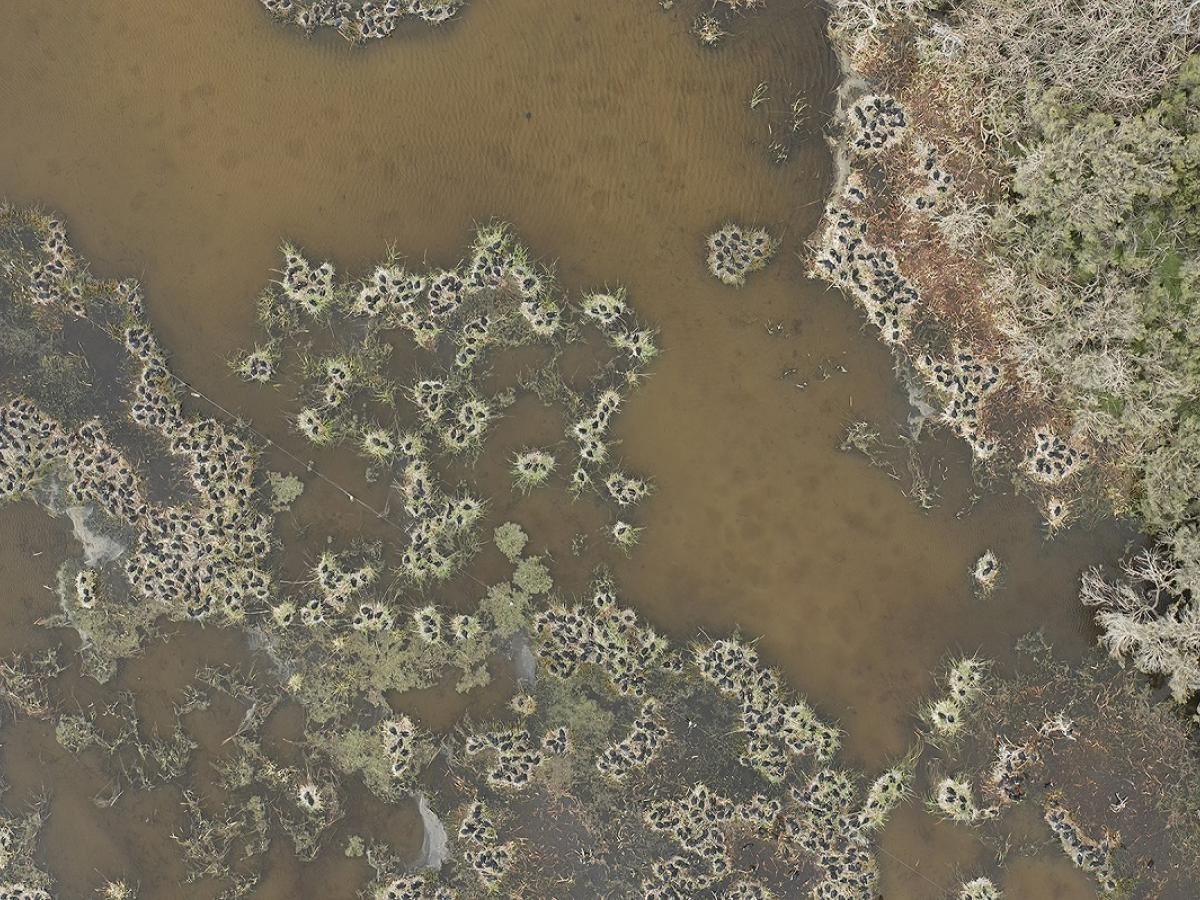
Photo: Murray-Darling Basin Authority.
Innovative drone technology and artificial intelligence (AI) software is providing more accurate monitoring of waterbirds across the Murray-Darling Basin - and could be used to monitor other wildlife in the future.
Experts from the University of Adelaide's Unmanned Research Aircraft Facility (URAF) and colleagues from the Australian Institute for Machine Learning (AIML) worked with The Murray-Darling Basin Authority (MDBA) to build a unique new tool that assesses pictures collected by drones to count waterbirds.
The Murray-Darling Basin is home to more than 120 species of waterbirds that are a key indicator of the Basin's overall environmental health.
"In a recently completed trial the collaboratively-developed reusable computer vision tool counted straw-necked ibis with an accuracy rate of more than 90 per cent," said Aaron Lane, Lead Software Engineer (Machine Learning) from AIML.
The University of Adelaide's Molly Ellis Hennekam, Director of URAF, says that improving the tool's accuracy is not the only benefit of these methods.
"Establishing drone-based protocols improves the repeatability of surveys so that we can compare bird population data collected from future visits to the same locations," she said.
"This builds a long-term record of the bird population that can be re-analysed by researchers in the future.
"Counts aided by machine learning can also reduce the time and resources required for undertaking population surveys, allowing them to be repeated more frequently or over larger areas of habitat."
"With careful consideration, drone technology can provide opportunities to fill niches in monitoring needs and streamline future surveys across a range of disciplines."The University of Adelaide's Molly Ellis Hennekam, Director of the Unmanned Research Aircraft Facility (URAF).
Researchers from URAF have been working with this technology for environmental monitoring and management since 2015 and are excited by its rapid development in recent years.
"With careful consideration, drone technology can provide opportunities to fill niches in monitoring needs and streamline future surveys across a range of disciplines," Ms Hennekam said.
Although the tool has been developed to count the number of straw-necked ibis in the Murray Darling Basin, it can be retrained to detect other animals or distinctive features in different landscapes.
The software code has been shared freely on the MDBA's GitHub page so researchers and other organisations can use the technology for their own purposes.
About the University of Adelaide's Unmanned Research Aircraft Facility
The University of Adelaide's Unmanned Research Aircraft Facility (URAF), known as the University's "drone hub" provides research and consultancy services, and customised training solutions. Researchers at URAF collaborate with industry, government and academic partners use drones and other emerging technologies for a wide range of environmental, agricultural and asset management applications. The facility also offers a suite of training courses, including applied mapping with drones workshops and Civil Aviation Safety Authority-accredited drone licensing courses.
About the University of Adelaide's Australian Institute for Machine Learning
AIML conducts globally competitive research and development in artificial intelligence (AI), machine learning, computer vision and deep learning. Based at Lot Fourteen-South Australia's innovation district-the institute collaborates with industry, government and business to develop high-tech products and solutions to everyday problems. AIML's clients and partners include leaders in fields such as agriculture, medicine, space, transport, defence, and creative industries.






